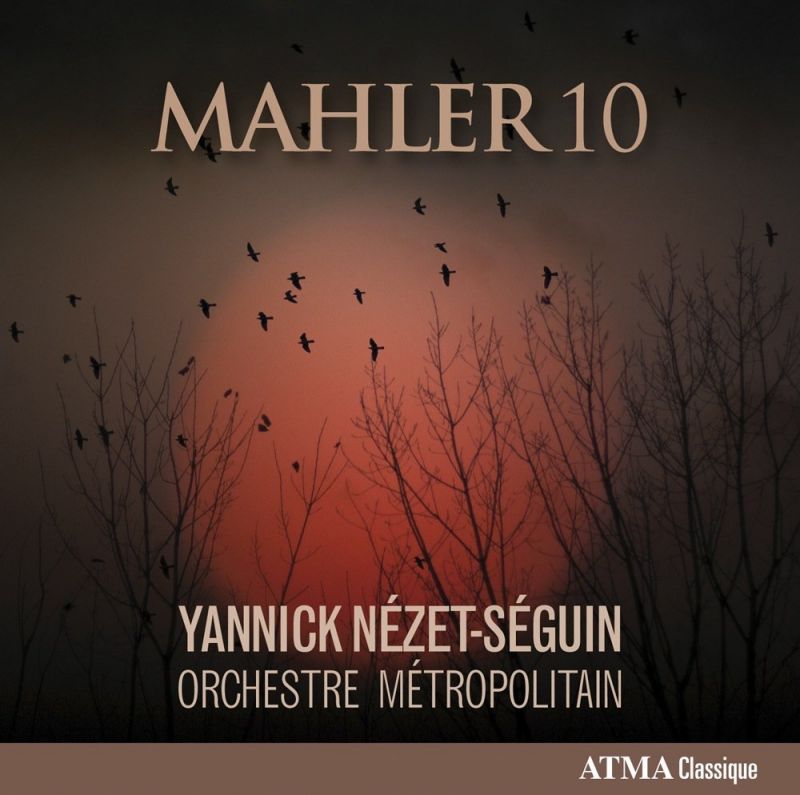MAHLER Symphony No 10
View record and artist detailsRecord and Artist Details
Composer or Director: Gustav Mahler
Genre:
Orchestral
Label: ATMA
Magazine Review Date: 12/2015
Media Format: CD or Download
Media Runtime: 79
Mastering:
DDD
Catalogue Number: ACD2 2711

Tracks:
| Composition | Artist Credit |
|---|---|
| Symphony No. 10 |
Gustav Mahler, Composer
Gustav Mahler, Composer Montreal Metropolitan Orchestra Yannick Nézet-Séguin, Conductor |
Author: David Gutman
In the absence of a definitive score, the range of interpretative possibilities is wider in Mahler’s Tenth than in any of his completed symphonies. Those who grew up with Deryck Cooke’s performing version via Simon Rattle’s serial renderings will spot that Nézet-Séguin does not follow him in replacing the bassoon line with a bass clarinet in bars 162 64 of the opening Adagio (Mahler not only left no indication, he didn’t actually write the solo). A number of accidentals are read another way but the main difference is one of tone. Rattle is altogether more interventionist in his desire to present the music as a masterpiece worthy of revival. Nézet-Séguin, seemingly intent on conjuring radiant Zen-like calm, no doubt sees that particular battle as already won. In Montreal the finale’s famous flute solo has a chaste, recorder-like quality, with a breathtaking triple piano for the entry of the strings. No percussive reinforcements impinge on the return of the Adagio’s piled-up breakdown chord. Earlier, between the fourth and fifth movements, there sits that non-functional drum stroke edited out by Rattle: unsuspecting listeners might attribute its retention to an editing fault. The Canadian thuds are louder than Rattle’s in Berlin, less earth-shattering than in Bournemouth. (Riccardo Chailly has lately tried prefacing the main beats with extra grace notes to simulate a tattoo!)
ATMA Classique’s documentation isn’t giving much away and one can’t help pining for the detailed explanatory superstructure of Rattle’s Bournemouth LP set (HMV, 12/80 – nla). Perhaps those who find even his Berlin remake hyperactive will welcome Nézet-Séguin’s more passive approach. The less grainy sound obtained in the open acoustic of the Maison Symphonique is certainly a plus.
Discover the world's largest classical music catalogue with Presto Music.

Gramophone Digital Club
- Digital Edition
- Digital Archive
- Reviews Database
- Full website access
From £8.75 / month
Subscribe
Gramophone Full Club
- Print Edition
- Digital Edition
- Digital Archive
- Reviews Database
- Full website access
From £11.00 / month
Subscribe
If you are a library, university or other organisation that would be interested in an institutional subscription to Gramophone please click here for further information.




